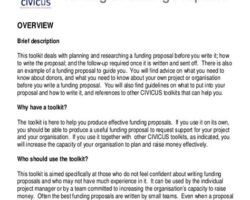Limited time and attention span
In today’s fast-paced world, time has become a precious commodity. With extensive to-do lists and constant distractions, it is no wonder that attention spans are becoming shorter than ever before. As a result, it has become increasingly challenging to engage and hold the attention of participants, whether in a classroom, workshop, or any other learning setting. To overcome this hurdle, it is crucial for educators and facilitators to understand the implications of limited time and attention spans on the learning experience.
One effective approach to address limited time and attention spans is to break down the content into bite-sized chunks. Instead of overwhelming participants with information overload, it is advisable to focus on key concepts and provide concise explanations. This allows learners to process the material more effectively and retain crucial information. Additionally, incorporating interactive and hands-on activities can help sustain engagement and prevent monotony. By encouraging active participation, individuals are more likely to stay focused and derive meaning from the learning experience.
Furthermore, leveraging technology can be a powerful tool to manage limited time and attention spans. Using multimedia elements such as videos, images, and infographics can help capture participants’ interest and make the learning process more dynamic. However, it is essential to strike a balance between multimedia usage and excessive reliance on technology. While technology can enhance engagement, it should not replace human interaction and personalized feedback.
To engage participants effectively, it is vital to acknowledge and address individual differences in learning styles and preferences. Everyone learns at a different pace and in various ways. By recognizing and accommodating these differences, educators can create a more inclusive environment that caters to diverse backgrounds and learning needs. Providing options for self-expression and personalization can also foster motivation and engagement among participants.
In conclusion, limited time and attention spans are significant challenges faced by educators and facilitators. However, by utilizing strategies such as breaking down content, incorporating interactive activities, leveraging technology appropriately, and acknowledging individual differences, it is possible to overcome these hurdles. Engaging participants in meaningful and interactive learning experiences not only enhances their understanding but also fosters a positive learning environment. By recognizing the importance of limited time and attention span, educators can optimize their teaching methods and create a transformative learning experience.
Engaging participants from diverse backgrounds
Engaging participants from diverse backgrounds is a crucial aspect of creating a successful and inclusive event. When participants come from different cultural, social, or professional backgrounds, it is important to create an environment that respects and celebrates diversity. By doing so, you can ensure that everyone feels included, valued, and motivated to actively participate in the event.
One effective way to engage participants from diverse backgrounds is by incorporating content-rich activities and discussions. This can help spark interest and provide a variety of perspectives for participants to explore. For example, you could invite guest speakers from different backgrounds to share their experiences and insights. This not only adds depth to the discussions but also encourages participants to actively engage and learn from each other.
Another important strategy is to use list and table HTML tags to present information in a clear and organized manner. By using lists, you can easily highlight key points or steps, making the content more accessible for participants with different learning styles. Tables, on the other hand, can be useful for comparing and contrasting information, allowing participants to visualize and understand complex concepts more easily.
Managing group dynamics and conflicts
Group dynamics and conflicts are common challenges that arise when working in a team or group setting. Whether it’s a classroom, workplace, or community event, managing group dynamics and conflicts effectively is essential for a productive and harmonious environment. In this blog post, we will discuss some strategies and techniques for managing group dynamics and conflicts.
One important aspect of managing group dynamics is creating a positive and inclusive atmosphere. It is crucial to foster an environment where everyone feels respected and valued, regardless of their backgrounds or opinions. This can be achieved by promoting open communication and active listening. Encouraging individuals to voice their thoughts and concerns helps in preventing conflicts from escalating.
Establishing clear goals and guidelines also plays a significant role in managing group dynamics and conflicts. When everyone is aware of the objectives and expected behaviors, it becomes easier to steer the group towards a common direction. This helps minimize misunderstandings and reduces the chances of conflicts arising due to differing expectations.
Additionally, building trust within the group is crucial for managing conflicts. By creating a safe space where individuals feel comfortable expressing their ideas or concerns, conflicts can be addressed in a constructive manner. Encouraging collaboration and teamwork helps in fostering relationships among group members, which in turn strengthens the group’s ability to navigate conflicts.
When conflicts do arise, it is important to address them promptly and objectively. Emphasizing the importance of constructive dialogue and problem-solving, rather than personal attacks or blame, is essential. Encouraging individuals to focus on finding solutions rather than dwelling on the conflict itself can help in resolving conflicts more effectively.
In summary, managing group dynamics and conflicts requires creating a positive and inclusive atmosphere, establishing clear goals and guidelines, building trust, and addressing conflicts promptly and objectively. By implementing these strategies, individuals can effectively navigate group dynamics and conflicts, leading to a more productive and harmonious environment.
| Strategies for Managing Group Dynamics and Conflicts |
|---|
| – Creating a positive and inclusive atmosphere |
| – Establishing clear goals and guidelines |
| – Building trust within the group |
| – Addressing conflicts promptly and objectively |
By implementing these strategies, individuals can effectively navigate group dynamics and conflicts, leading to a more productive and harmonious environment.
Addressing individual skill levels and needs
Addressing individual skill levels and needs is a crucial aspect of creating a successful and inclusive learning environment. Every participant comes with their own unique set of skills, experiences, and learning needs. As an educator or facilitator, it is essential to recognize and cater to these individual differences to ensure that everyone can fully engage and benefit from the learning experience.
One way to address individual skill levels and needs is to conduct a pre-assessment or needs analysis at the beginning of the learning program. This can be done through a survey, questionnaire, or observation to gather information about the participants’ current knowledge, skills, and learning goals. By understanding the specific needs and skill levels of the participants, you can tailor the learning content and activities to meet their individual requirements.
Another effective strategy is to offer differentiated instruction during the learning process. This involves providing a variety of learning materials, resources, and activities that cater to different skill levels and learning styles. For instance, you can create multiple levels of difficulty for assignments or tasks, offer additional resources for those who need extra support, and provide opportunities for advanced learners to extend their learning.
- Provide clear learning objectives and expectations
- Offer a variety of learning materials and resources
- Use different instructional strategies
- Encourage peer collaboration and support
- Monitor individual progress and provide feedback
In addition to differentiation, it is important to establish a supportive and inclusive learning environment. Encourage participants to share their thoughts, questions, and concerns openly. Create opportunities for peer collaboration and support, so that participants can learn from each other and build a sense of community. Acknowledge and value the diverse skills and experiences of the participants, as this can foster a positive and inclusive learning atmosphere.
| Key Considerations | Actions |
|---|---|
| Identify individual skill levels and needs | Conduct pre-assessment or needs analysis |
| Offer differentiated instruction | Create multiple levels of difficulty, provide additional resources, and extend opportunities for advanced learners |
| Establish a supportive learning environment | Encourage open communication, peer collaboration, and value diverse skills and experiences |
By addressing individual skill levels and needs, you can create a learning environment that is inclusive, engaging, and impactful for all participants. Remember, every individual brings something unique to the table, and by acknowledging and catering to their individuality, you can empower them to reach their full potential.
Creating interactive and hands-on activities
Creating interactive and hands-on activities is essential in any learning or training environment. By incorporating interactive elements into the activities, participants are actively engaged in the learning process, which enhances their understanding and retention of the material. Additionally, hands-on activities provide participants with the opportunity to apply what they have learned in a practical way, reinforcing their knowledge and skills.
One effective way to create interactive activities is to incorporate group work. Encourage participants to work together in small teams, allowing them to collaborate, share ideas, and learn from one another. This fosters a sense of camaraderie and teamwork, and also promotes communication and problem-solving skills. Group activities can take many forms, such as case studies, role-playing scenarios, or even simple brainstorming sessions.
Another approach to create interactive activities is to utilize technology. Integrating technology into the learning process can make activities more engaging and interactive. For example, you can incorporate online quizzes or interactive simulations that allow participants to actively participate and make decisions. This not only enhances their learning experience but also provides immediate feedback, which is crucial for their understanding and self-assessment.
- Group work encourages collaboration and communication
- Technology enhances engagement and provides feedback
- Hands-on activities reinforce knowledge and skills
| Benefits of Interactive Activities | Examples |
|---|---|
|
|
Providing effective feedback and guidance
When it comes to providing effective feedback and guidance, it is important to have a structured and tailored approach. Feedback plays a crucial role in the learning process, helping individuals to identify their strengths and areas for improvement. It not only enables participants to grow and develop but also encourages them to strive for excellence and achieve their goals. In this blog post, we will explore some best practices for providing feedback and guidance in various educational settings.
One key aspect of providing effective feedback is to make it specific and actionable. Rather than giving vague or generic feedback, it is important to focus on specific behaviors or actions that can be improved. For example, instead of saying “good job,” you might say “I really like how you explained your ideas clearly, but try to work on providing more evidence to support your arguments.” This way, participants have a clear understanding of what they did well and what they can work on.
Another important aspect is to provide feedback in a timely manner. Feedback that is given immediately after a task or activity allows participants to reflect on their performance while it is still fresh in their minds. It also helps to reinforce positive behaviors or correct any misconceptions or mistakes. Delayed feedback may not have the same impact, as participants may have already moved on to other tasks or activities.
In addition to timely feedback, it is also important to create a safe and supportive environment. Participants should feel comfortable receiving feedback and be encouraged to ask questions or seek clarification. This helps to foster a growth mindset, where participants see feedback as an opportunity for growth and improvement rather than as a personal criticism. Creating a positive feedback culture can greatly enhance the learning experience and motivate participants to actively engage and participate in the educational setting.
Lastly, it is essential to provide constructive feedback. While it is important to highlight areas for improvement, it is equally important to recognize and acknowledge participants’ efforts and achievements. Constructive feedback should focus on guiding participants towards their goals and providing them with strategies or resources to enhance their performance. This could include suggestions for additional practice, recommended reading materials, or further learning opportunities.
In conclusion, providing effective feedback and guidance is a fundamental aspect of facilitating learning and development. By making feedback specific and actionable, delivering it in a timely manner, creating a safe and supportive environment, and providing constructive guidance, educators can empower participants to reach their full potential. Remember, feedback is not just about pointing out mistakes but also about recognizing progress and inspiring growth. So, let’s embrace the power of feedback and guide our participants towards success!
Encouraging participant motivation and self-expression
Encouraging Participant Motivation and Self-Expression
When it comes to facilitating a successful workshop or training session, one of the key challenges that trainers and facilitators face is how to encourage participants’ motivation and self-expression. Motivation plays a crucial role in individuals’ willingness to engage and actively participate in the learning process. Without motivation, participants’ attention and interest may dwindle, leading to less effective learning outcomes. Additionally, providing space for self-expression allows participants to share their thoughts, ideas, and experiences, fostering a deeper understanding and connection with the topic at hand.
There are several strategies that trainers can employ to encourage participant motivation and self-expression. Firstly, setting clear and attainable goals for the workshop can be highly motivating. When participants have a clear understanding of what they can achieve through the workshop and see how it aligns with their personal or professional objectives, they are more likely to be engaged and motivated to actively participate.
Listed below are some effective strategies:
- Provide a supportive learning environment: Creating a safe and non-judgmental environment where participants feel comfortable expressing their thoughts and opinions is essential. Trainers should establish ground rules that promote respect and active listening, allowing participants to freely express themselves without fear of criticism or judgment.
- Encourage active participation: Actively engaging participants throughout the workshop not only keeps their attention, but also encourages self-expression. Using interactive activities, such as group discussions, role-plays, or hands-on exercises, allows participants to get involved and actively contribute to the learning process.
- Recognize and validate participant contributions: Acknowledging and applauding participants’ contributions, whether through verbal affirmations or small rewards, can significantly boost motivation. When participants feel that their opinions and ideas are valued, they are more likely to remain engaged and motivated.
In addition to strategies mentioned above, the following table showcases key benefits of encouraging participant motivation and self-expression:
| Benefits | Explanation |
|---|---|
| Increased engagement | Participants who are motivated and feel encouraged to express themselves are more likely to actively engage with the content and discussions. |
| Deeper learning | When participants are motivated, they are more likely to invest effort in understanding and retaining the information being presented. |
| Enhanced creativity | Self-expression allows participants to tap into their creative thinking and problem-solving skills, leading to innovative ideas and solutions. |
| Building rapport | Encouraging participants to express themselves fosters a sense of trust and camaraderie among the group, creating a supportive learning community. |
By employing these strategies and recognizing the benefits, trainers and facilitators can create an environment that encourages participants’ motivation and self-expression. When participants feel motivated and have the opportunity to express themselves freely, they are more likely to actively engage, leading to a more enriching and meaningful learning experience.
Frequently Asked Questions
How can limited time and attention span be managed in a group learning setting?
To manage limited time and attention span in a group learning setting, it is important to break the learning material into bite-sized chunks and provide regular breaks. Incorporating interactive activities, such as group discussions or hands-on exercises, can also help maintain participants’ engagement and focus.
What strategies can be used to engage participants from diverse backgrounds?
To engage participants from diverse backgrounds, it is important to create a welcoming and inclusive learning environment. This can be done by acknowledging and respecting different perspectives and cultural backgrounds, promoting open dialogue and active listening, and facilitating collaborative learning opportunities that allow participants to share their experiences and knowledge.
How can group dynamics and conflicts be effectively managed in a learning setting?
To effectively manage group dynamics and conflicts in a learning setting, it is important to establish clear guidelines and expectations for behavior and participation. Encouraging open communication, promoting empathy and understanding, and facilitating conflict resolution strategies, such as mediation or group discussions, can also help address and resolve conflicts in a constructive manner.
What methods can be used to address individual skill levels and needs in a group learning setting?
To address individual skill levels and needs in a group learning setting, it is important to conduct a needs assessment at the beginning of the session to identify the varied skill levels and learning objectives of participants. This information can then be used to customize the learning experience, such as by providing differentiated instruction, offering additional resources or support for struggling participants, and promoting peer-to-peer learning and collaboration.
How can interactive and hands-on activities enhance the learning experience?
Interactive and hands-on activities can enhance the learning experience by promoting active engagement, critical thinking, and problem-solving skills. By involving participants in interactive activities, such as role plays, case studies, or group projects, they are more likely to retain and apply the knowledge and skills being taught.
What are some effective strategies for providing feedback and guidance to participants?
Some effective strategies for providing feedback and guidance to participants include offering specific and constructive feedback that focuses on strengths and areas for improvement, using a range of feedback methods, such as peer feedback or self-reflection exercises, and incorporating opportunities for participants to apply feedback and revise their work.
How can participant motivation and self-expression be encouraged in a group learning setting?
To encourage participant motivation and self-expression in a group learning setting, it is important to provide opportunities for choice and autonomy in the learning process. This can include allowing participants to set their own learning goals, incorporating activities that tap into their interests and passions, and providing a supportive and non-judgmental environment where participants feel comfortable expressing their ideas and opinions.





